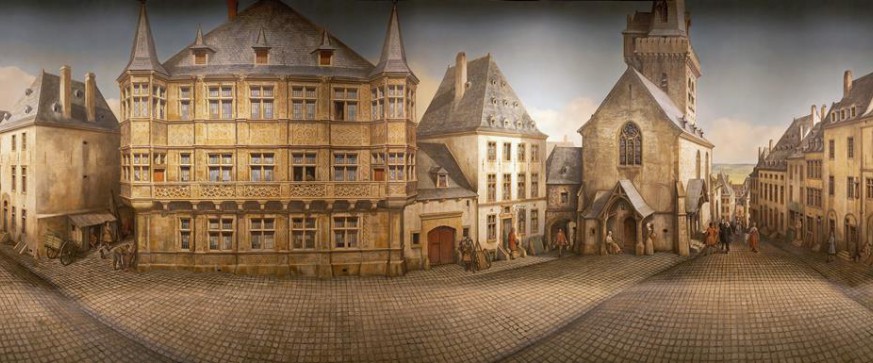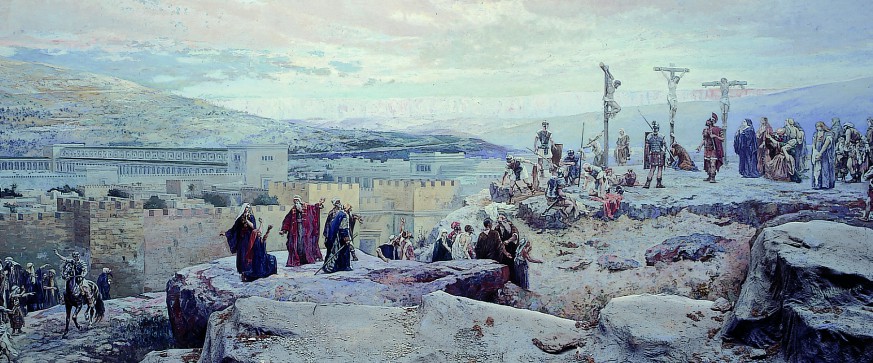The word 'panorama' is common in modern language. But the term was originally created in 18th century for an extraordinary visual spectacle. A panorama (or a cyclorama it is called in some parts of the world) includes a huge painting and its foreground, the surrounding building, and its meaning in history and modern society.
In its original sense the panorama is a large cylindrical painting together with its 360 degree foreground, surrounding the spectator in virtual continuum. Thus a panorama creates the illusion of standing in the middle of a landscape and scene, while the depicted events were happening. Natural lighting from an invisible source (windows all around in the roof, hidden from the spectator) adds to the virtual reality of the experience.
The interest of IPC comprises the panorama phenomenon in a wider context, both nineteenth-century derivatives of the panorama, such as the moving panorama, and modern panorama art forms such as panorama photography, gaming and 3D film, all closely related to the all-surrounding panorama experience.
The International Panorama Council’s concern is the panorama phenomenon as a unique art form and an experience of virtual reality, evoked in a cylindrical environment. Proving evidence of human creative genius, it was invented (and the word ‘panorama’ was coined) at the end of the eighteenth century. Since then its testimonials of comprehensive history have evolved into a rare heritage, representing and exhibiting a worldwide interchange of human development in art and architecture, tourism and battle events, education and industry.
New panoramas
The panorama phenomenon is vivid and developing. Besides the surviving heritage panoramas from the 19th and early 20th century, new panoramas of 360° or semi-circle panoramas of 180° were and still are created. The worldwide family of panoramas is growing and almost every year a new panorama joins!
Contemporary panoramas have received a great deal of worldwide attention. The dominant approach in modern times is to re-create some version of the original panorama format patented by Barker and popularized in the 19th century. Many of these contemporary projects are done as 360 degree paintings (or printed canvases) placed in specially built structures or remodelled interiors. The greatest number of examples of these have been built and painted on a comparable scale to 19c panoramas and created to memorialize important locations of P.R. China’s history. Beside others an important role in this Chinese re-invention of the panorama phenomenon was played by the Luxun Academy of Fine Arts in Shenyang, China.
Other new panoramas have been painted on a smaller scale such as those found in Norfolk Island, Australia, by Sue Draper and Tracey Yager; at Hawker, Australia, by Jeff Morgan; and in Los Angeles, California, by Sara Velas. Most recently a large painted domed panorama was opened in Istanbul, Turkey. New projects are on their way and new panoramas are created almost every year.
Supplementing these traditional painting techniques are those panoramas made using the latest digital technology and printing techniques and completed on enormous scale in on display in Leipzig, Dresden and Berlin, Germany, by YadegarAsisi.
Creating a new panorama is an extraordinary task that calls the persons in charge for the project to find solutions for a series of problems. Investing time in the project planning helps to get a good result. IPC members are experienced in the special situation of panoramas. If you plan to create a new panorama, we can link you to these specialists and their knowledge.

.jpg)

.jpg)
.jpg)
.jpg)
.jpg)


.jpg)
.jpg)






.jpg)

